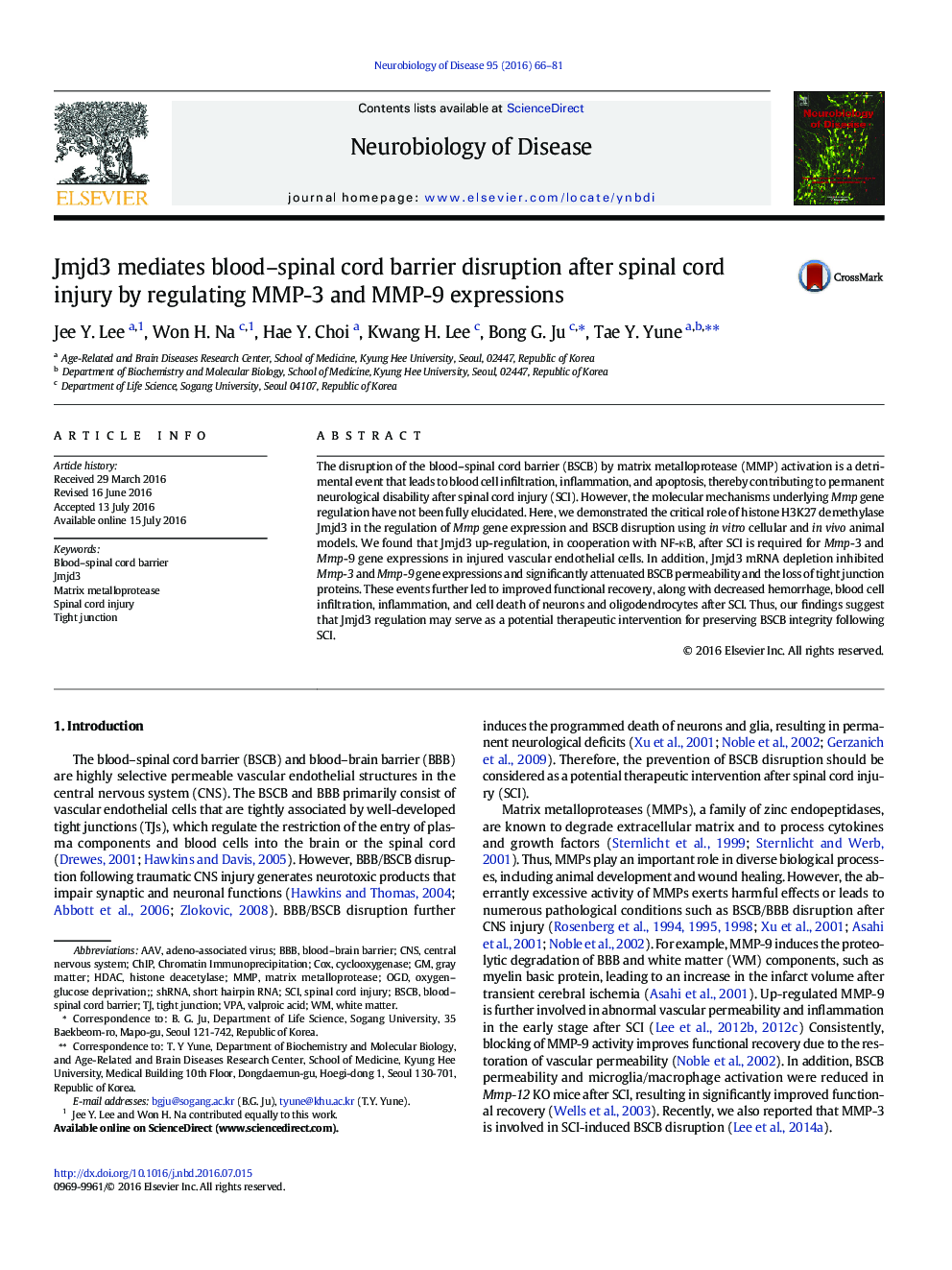| Article ID | Journal | Published Year | Pages | File Type |
|---|---|---|---|---|
| 3069234 | Neurobiology of Disease | 2016 | 16 Pages |
•Jmjd3 activates the expression of Mmp-2, -3, and -9 in bEnd.3 cells after hypoxia.•Silencing Jmjd3 inhibits the expression and activation of MMP-3 and MMP-9 after SCI.•Silencing Jmjd3 inhibits blood–spinal cord barrier disruption after SCI.•Silencing Jmjd3 inhibits neuronal death and improves functional recovery after SCI.
The disruption of the blood–spinal cord barrier (BSCB) by matrix metalloprotease (MMP) activation is a detrimental event that leads to blood cell infiltration, inflammation, and apoptosis, thereby contributing to permanent neurological disability after spinal cord injury (SCI). However, the molecular mechanisms underlying Mmp gene regulation have not been fully elucidated. Here, we demonstrated the critical role of histone H3K27 demethylase Jmjd3 in the regulation of Mmp gene expression and BSCB disruption using in vitro cellular and in vivo animal models. We found that Jmjd3 up-regulation, in cooperation with NF-κB, after SCI is required for Mmp-3 and Mmp-9 gene expressions in injured vascular endothelial cells. In addition, Jmjd3 mRNA depletion inhibited Mmp-3 and Mmp-9 gene expressions and significantly attenuated BSCB permeability and the loss of tight junction proteins. These events further led to improved functional recovery, along with decreased hemorrhage, blood cell infiltration, inflammation, and cell death of neurons and oligodendrocytes after SCI. Thus, our findings suggest that Jmjd3 regulation may serve as a potential therapeutic intervention for preserving BSCB integrity following SCI.
